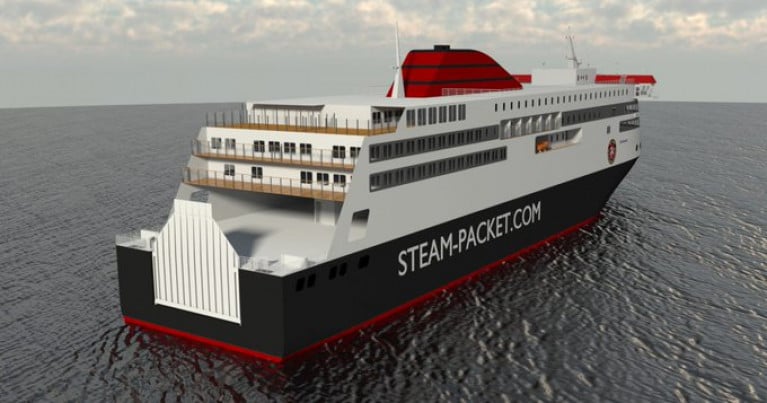Displaying items by tag: Progressing well
Plans for Isle of Man Newbuild 'Manxman' Design Progressing Well Says Steam-Packet
As Afloat previously reported plans for a newbuild ferry to be named Manxman and due for delivery in 2023 replacing Ben-my-Chree, are progressing well according to the Isle of Man Steam Packet.
The detailed design of both the external and internal features of Manxman are currently being undertaken by a team of experts. This vital phase is the longest and where some of the most important decisions are made.
A range of work will take place over a period of around 12 months, including the development of a 3D detailed design drawing of the vessel, as well as construction drawings to allow the vessel to be built. In addition, interior design and internal layouts will be finalised and vessel equipment and machinery agreed.
Despite the ongoing impact of the pandemic, significant progress has been made over the last 12 months. In July, it was announced that the vessel will be built at Hyundai Mipo Dockyard (HMD) in South Korea, one of the world’s major shipbuilders and a leading blue chip name in the industry.
In December, after much deliberation and taking the views of the public into consideration, it was revealed that the new vessel will be named Manxman. More than 7,500 people submitted their favourite from the shortlist of names, the results of which played a key part in the selection process.
Isle of Man Steam Packet Company Chief Executive Mark Woodward said: ‘We are pleased with how plans are progressing and that, despite the pandemic, we have largely been able to stay on schedule and continue to make significant progress. It is a large-scale project which naturally takes time and many hours of meticulous planning, however we are excited to move forward with the detailed design of Manxman.’
There are many stages involved in the process which the Steam Packet Company covers in detail in its two-part blog series, Designing & Constructing a Vessel.
Part one looks at what is involved in the planning, design and construction of a bespoke ferry and the different steps involved in the process.
As for Part two, this provides a unique insight into how long the whole process usually takes, the types of specialist organisations it will be working with and the challenges the ferry company faces over the next few years.





























































